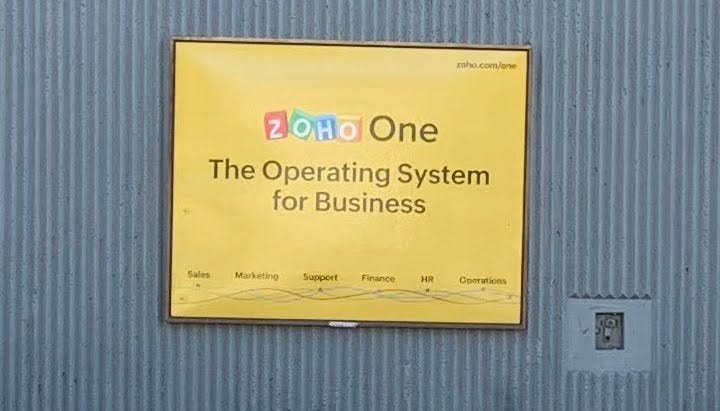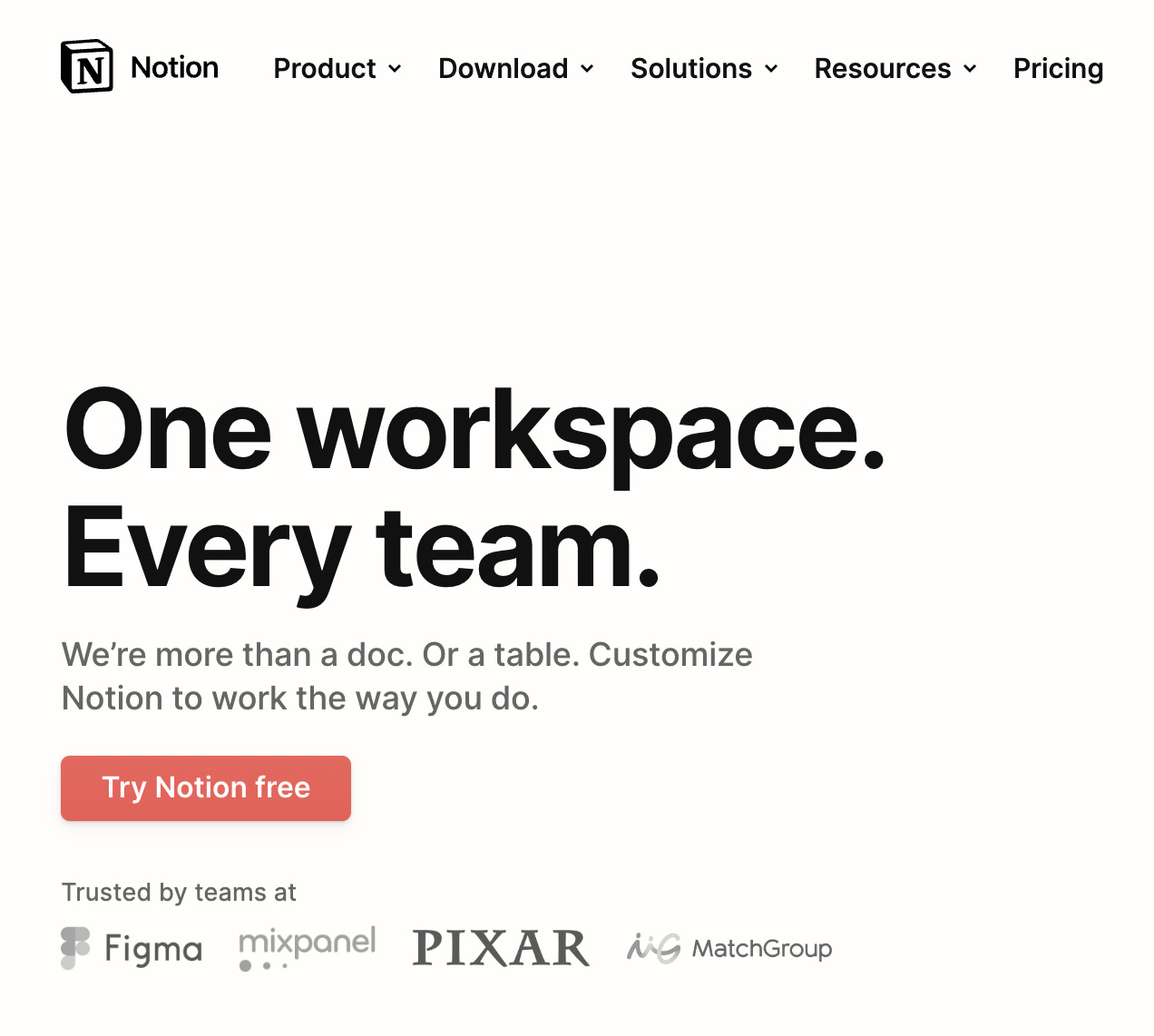The allure of 'all-in-one' marketing (and why to avoid it)
When you want to be everything to everyone, you risk being nothing
There comes a time in a company’s growth, typically when it sells more than one product, where its marketers and executives are tempted to describe the company as an all-in-one offering. “We’re the all-in-one [category] platform”. “One platform to do xyz.” That it’s a one-stop-shop for all of their customers’ needs.
It comes from the desire to pack all of the value from its multiple products into a simple sentence. To differentiate from smaller, point-solution competitors. To position the company as the market leader in its category.
Don’t do it.

If you ask your customers what their biggest challenges are, where on the list will “finding an all-in-one platform” or “consolidating our tech stack” be?
If it’s not among the top items on that list – and for most people it isn’t – then “all-in-one” shouldn’t be a leading message.
A few other reasons to use caution with an “all-in-one” message:
It doesn’t help prospects understand what you can do for them
It’s not unique or differentiating as a macro message
You don’t actually do everything, “all” will mean something different for each person
Instead, stick to the basics: talk about how you solve problems and create value.

That said, there are a number of places where it can be helpful and appropriate to use this kind of language:
In comparisons against specific competitors it might be a legitimate differentiator e.g. if you have competitive intel docs or battle cards for use against a point-solution competitor.
It could be a critical factor for enterprise buyers or in mature industries where technology consolidation actually is a strategic priority, like marketing or HR software.
On a pricing page to show how your suite of products/solutions are packaged.
All-in-one vs. point-solutions
For all of the advantages that all-in-one/platform companies have – more resources, economies of scale, etc. – they are at a distinct disadvantage in the relevancy of their marketing: it’s harder for platforms to connect their messages to the specific needs of a buyer. This creates huge openings for startups / point-solutions to succeed.
This disadvantage is reflected in the search results for “all in one vs. point solution” (let me google it for you): every result is a different SaaS company’s blog explaining why an all-in-one platform is better than a point-solution. Why would that be?
(Side note: ActiveCampaign – a marketing point-solution – actually ran a marketing campaign attempting to deposition all-in-one platforms. It was very odd.)
People buy tools to solve specific problems, and point-solutions by definition are focus all of their marketing on solving that exact problem; versus platforms, which have multiple products to package and sell that muddy up messaging.
Here are some examples to illustrate the challenge companies face with all-in-one marketing.
Zoho
As someone who is barely aware of Zoho as a company, I thought this billboard by Zoho was curious: when I see this what am I supposed to think Zoho will do for me and my company? Surely they won’t address every single need across every department.
Kintone
Speaking of Zoho, in a search for “zoho one” the first result is an ad from Kintone that doesn’t say much about what they do or why they’re better than Zoho.
Similarly, the home page of Kintone’s website offers little in terms of who, what, or why you would be interested in their platform.
It’s unfortunate really. You can imagine the meetings that lead to this watered-down messaging: different execs, marketers, PMs, from different product areas weighing in on what words encompass everything the company does. Prospects are left wondering, what do you actually do?
Notion
Notion was one of the fastest growing apps in 2021. I still haven’t tried using it because frankly I don’t know why I should.
Notion is a quintessential product-led growth company. With PLG companies the strategy is basically to land and expand: acquire individual users on free plans to ultimately get entire teams and companies using the product.
So, they go with this “One workspace. Every team.” message which reflects that goal – “hey user, we want your whole team on board here.”
It’s a backwards way to approach messaging. The problem is that it doesn’t describe what they do, and it doesn’t differentiate them from hundreds of other SaaS tools out there.
The “one workspace every team” message could honestly apply to any software product. I recently started using Trello to track my own tasks at work. It could become a really powerful way for me to co-manage product launches with cross-functional teams if we all used this platform together. But this would be more about culture and coordination within my company than Trello’s platform capabilities. Likewise with Notion, why should I start using the tool in the first place before I commit to getting my whole company on board.
Trello (Atlassian)
Trello is one of many products that Atlassian markets and sells alone and/or packages with other products in their portfolio.
I found it interesting that compared to Notion (not necessarily a competitor), Trello spotlights the fact that people work differently as opposed to saying they should all do it in one place.
Zoom
Zoom is one of the most recognizable (B2B) brands today.
They’ve recently updated their banding with the “one platform” message and “ZOOOOOOM” logo to highlight the breadth of their platform i.e. that they do it all in terms of helping teams connect with each other.
Is it effective? One could say that their brand is so strong that they can skip the step of explaining what they do – everyone already knows that they’re the video call platform.
Ashby
Ashby is a recruiting platform that just launched recently, and has gone all in with an “all-in-one” message.
This makes it harder than it should be to see how they’re disrupting a pretty established HR software category.

From my own research Ashby’s suite of capabilities for HR teams seems pretty awesome and differentiated. And the experience on their website is very clean and nice-looking, which I’m sure is the same for their product experience.
However, I would guess/hope that future iterations of their messaging will get more into the strategic value they provide beyond being an “all-in-one” recruiting solution and “not just another ATS” (applicant tracking system).
Bonus
Here’s a Dall-E generated image for “all-in-one technology company with products for sales, marketing, finance, HR, operations”. Sign me up.









